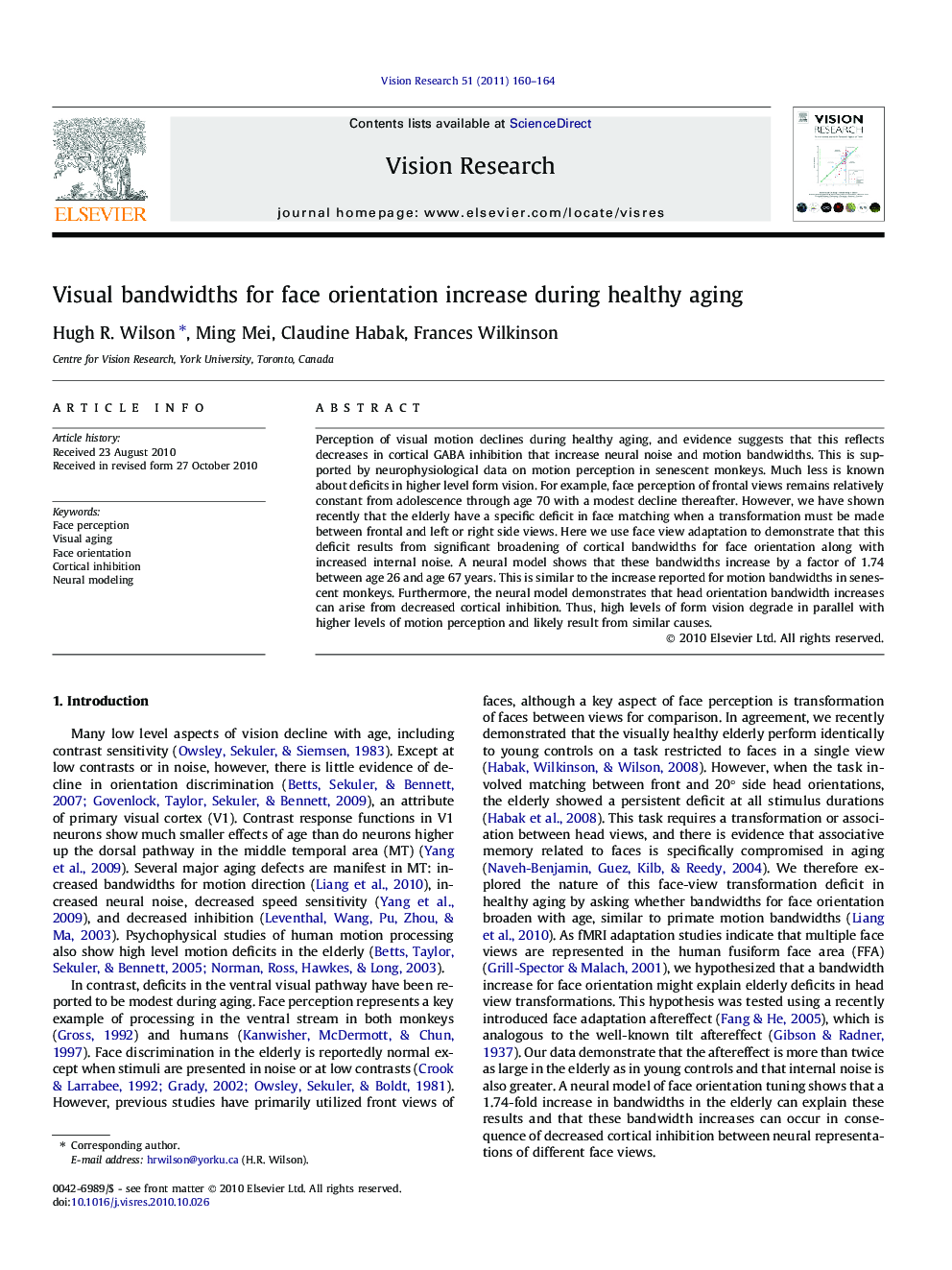| Article ID | Journal | Published Year | Pages | File Type |
|---|---|---|---|---|
| 4034351 | Vision Research | 2011 | 5 Pages |
Perception of visual motion declines during healthy aging, and evidence suggests that this reflects decreases in cortical GABA inhibition that increase neural noise and motion bandwidths. This is supported by neurophysiological data on motion perception in senescent monkeys. Much less is known about deficits in higher level form vision. For example, face perception of frontal views remains relatively constant from adolescence through age 70 with a modest decline thereafter. However, we have shown recently that the elderly have a specific deficit in face matching when a transformation must be made between frontal and left or right side views. Here we use face view adaptation to demonstrate that this deficit results from significant broadening of cortical bandwidths for face orientation along with increased internal noise. A neural model shows that these bandwidths increase by a factor of 1.74 between age 26 and age 67 years. This is similar to the increase reported for motion bandwidths in senescent monkeys. Furthermore, the neural model demonstrates that head orientation bandwidth increases can arise from decreased cortical inhibition. Thus, high levels of form vision degrade in parallel with higher levels of motion perception and likely result from similar causes.
Research highlights► Face view adaptation produces a larger a shift in elderly observers than in young. ► Neural model indicates 1.7 times wider bandwidths for face views in elderly. ► Results consistent with reduction of GABA inhibition between face views for elderly. ► Data agree with increased bandwidths in higher visual areas of senescent macaques.
